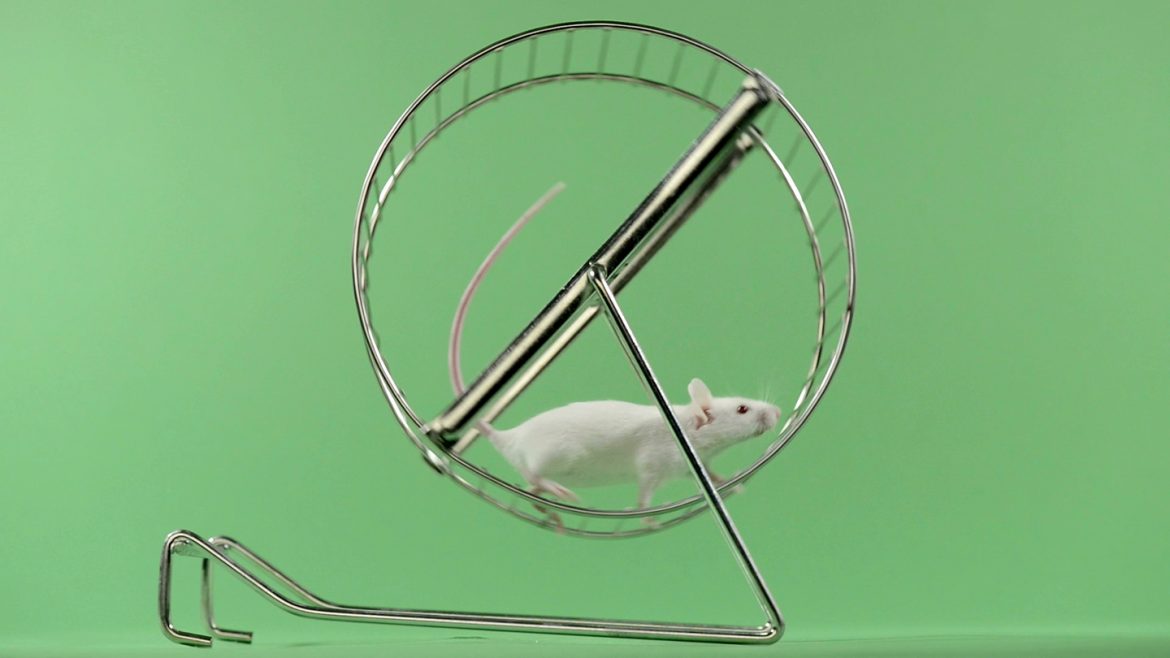CHICAGO — Mice love to run. But not when they’re taking semaglutide, the diabetes and weight-loss drug sold as Ozempic and Wegovy. While on the drug, mice ran less on a wheel in a cage, a new study shows.
The results, presented October 7 at the annual meeting of the Society for Neuroscience, are preliminary. Still, the unexpected finding raises questions about whether such increasingly popular drugs, which mimic a hormone called GLP-1, might be tinkering with people’s motivation to exercise (SN: 8/29/23).
The new results fit with what’s known about these drugs’ abilities to change brain behavior, says neuroscientist Karolina Skibicka of Penn State University and the University of Gothenburg in Sweden. “I think it’s really important,” she says of the new finding on exercise. “I’ve spent most of my career looking at these drugs. But I still think we don’t know everything.”
Mice with unfettered access to a wheel will use it extensively, running a whopping 10 kilometers a day, says Ralph DiLeone, a neuroscientist at Yale University. “If you look at how much they’re running, it’s just nuts,” he says.
But mice given semaglutide for seven days ran significantly less than their usual mileage, DiLeone and colleagues found. These mice — both males and females — reduced their average daily distance by about 38 percent. When the mice went off semaglutide, their running distance snapped back to normal.
As expected, the mice on semaglutide lost weight. But mice on restricted diets that lost about the same amount of weight without the drug didn’t change their running habits, the researchers found. That suggests weight loss isn’t causing the new sedentary behavior.
Instead, this reduced running reflected a lack of motivation, further experiments suggested. Researchers trained the mice to unlock their running wheel by poking their noses into a slot, working for their workout, essentially. Mice would usually be willing to poke multiple times to unlock their running wheel. But mice on semaglutide poked less, suggesting that they were less eager to unlock their wheel.
It’s too soon to say whether the mice’s altered running habits actually relate to the more complicated exercise decisions that people make. If these drugs do make people less motivated to exercise, Skibicka says, doctors might need to change how they talk with patients about these drugs, “saying, ‘Hey, you might feel like you don’t want to exercise. But it’s really important that you do.’”
GLP-1 drugs help people lose weight, but part of that weight is muscle, Skibicka says. “If you add reduced exercise to this, now that’s a problem,” she says. “Muscle mass is important for health. Being lean without muscle mass is not a healthy state either.”
But it could be that the mice’s running is more like a compulsion. “It is possible that the mice are also exercising compulsively,” DiLeone says, and that semaglutide may reduce this urge. That fits with other results that suggest the drug may ease addictions, perhaps by affecting the brain’s reward systems (SN: 8/30/23). Some people taking semaglutide have reported less desire for food, alcohol and nicotine.
It’s tricky to know whether these results apply to people, says exercise physiologist Glenn Gaesser of Arizona State University in Phoenix. He is not aware of any evidence that people exercise less while on these drugs. “That said, fatigue, low energy and nausea are reported side effects,” and those symptoms could sap people’s motivation to be active.
“Physical activity and fitness have a greater impact on life span and health span than weight loss,” Gaesser says. He is concerned that people who view exercise only as a weight-loss strategy “might be less inclined to be physically active after taking one of the new GLP-1 drugs by thinking, ‘Why exercise since I can lose weight with a drug?’ That would be a big mistake.”
Source link
